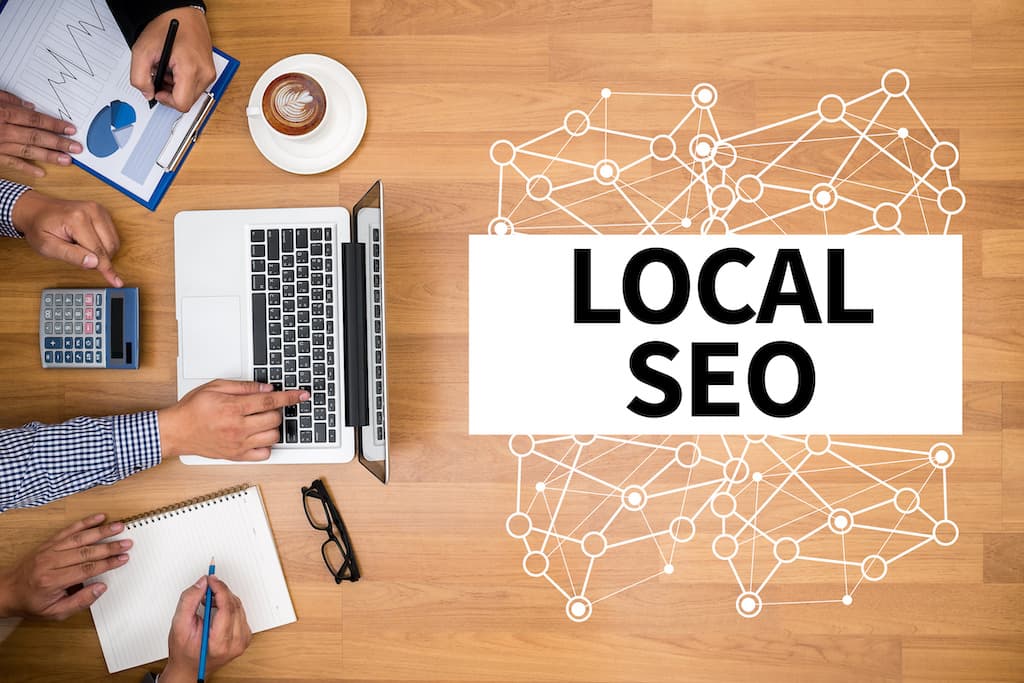Doubling Down on Local SEO in 2025
Local SEO now accounts for over 46% of all Google searches, making it essential for businesses to strengthen their local digital presence. The competition for local visibility has intensified, with new ranking factors and consumer behaviors reshaping how people discover nearby businesses.
Your local SEO strategy needs immediate attention to stay competitive in this evolving landscape. The businesses that adapt quickly to these changes will dominate local search results while others struggle to maintain visibility.
Evolving Local SEO Signals in 2025
Google’s algorithm now places stronger emphasis on verified business information, high-quality local content, authentic customer reviews, and precise location-intent matching. These signals don’t operate in isolation—they work together to determine which businesses rise to the top of local search results and Maps listings.
To compete, you’ll need a holistic approach that touches every part of your digital presence.
1. Google Business Profile Optimization
Your Google Business Profile (GBP) is the foundation of local visibility. Google rewards businesses that maintain complete and active profiles with accurate NAP (Name, Address, Phone) details.
Add high-quality photos of your storefront, interior, products, and team—15+ images are ideal.
Post weekly updates about hours, services, promotions, or events to boost engagement.
Select one precise primary category and up to nine secondary categories to describe your services accurately.
Respond quickly to customer Q&A—fast replies build trust and ranking signals.
Enable messaging and aim to respond within an hour; Google tracks responsiveness as a quality factor.
2. Localization of Your Content
Beyond your GBP, local content demonstrates geographic relevance and expertise. Businesses that create genuine, community-focused content consistently outperform competitors.
Build unique location-specific pages for each service area.
Highlight local events, partnerships, and community involvement.
Use city names naturally in titles and headers, but avoid keyword stuffing.
Publish case studies and customer success stories tied to specific locations.
Add structured data markup (addresses, hours, phone numbers, services) to help search engines connect your business to local queries.
3. User Reviews & Trust Signals
Reviews remain the single most powerful local ranking factor in 2025. Google favors businesses with steady review growth, strong ratings, and meaningful customer feedback.
Aim for 50+ reviews with ratings above 4.0 stars.
Encourage detailed reviews mentioning services or products for better keyword relevance.
Respond to all reviews within 24–48 hours, maintaining professionalism.
Handle negative feedback constructively, inviting offline resolution.
Diversify review platforms—Facebook, Yelp, and industry-specific directories broaden your trust profile.
Monitor review velocity; sudden spikes may trigger spam filters.
4. Proximity & Intent
Finally, proximity and intent are reshaping local search dynamics. Google now better interprets the context of searches, giving users hyper-relevant results.
"Near me" queries prioritize businesses within 3–5 miles of the searcher.
Mobile-friendly websites that load quickly and offer clear contact options rank higher.
Optimize for conversational queries as voice search continues to grow.
Local search ads indirectly boost organic results by increasing clicks and engagement.
Real-world signals matter: mobile foot traffic data helps Google verify popularity.
Timing plays a role—restaurants rank higher during meal hours, while service providers peak during business hours.
Actionable Local SEO Strategies to Double Down
1. Schema & Structured Data
Structured data is the backbone of visibility in local search. LocalBusiness schema markup gives Google clear details about your location, hours, and services, making your listings more reliable.
Include contact schema with your exact business name, address, phone number, and hours.
Add review schema so your star ratings can display directly in search results.
Use service area markup if you cover multiple regions—it tells Google where you operate.
Always validate with Google’s Rich Results Test, since invalid schema can harm performance.
2. NAP Consistency 2.0
Consistency across platforms is non-negotiable. Even small differences like “Ave.” versus “Avenue” can erode trust with search engines.
Create a master document with your exact business name, address, phone, website, and hours.
Audit and update this information monthly using tools like BrightLocal or Moz Local.
Prioritize accuracy on high-value platforms such as Google Business Profile, Apple Maps, Bing Places, Facebook, and industry directories.
3. AI & Automation
Automation ensures your local presence stays active and responsive without overwhelming your team.
Use automated review monitoring tools to reply to feedback within hours.
Set up Google Alerts to catch brand mentions across the web.
Automate posting schedules for your Google Business Profile—photos, updates, and promotions keep your listing fresh.
Leverage AI-powered tools to create location-specific landing pages and blog content at scale.
Use social automation platforms to distribute local content across multiple channels consistently.
4. Link Building with Local Relevance
Backlinks remain one of the strongest ranking signals, and locally relevant links send even clearer authority signals.
Pitch stories to local newspapers and community websites to earn editorial links.
Partner with nearby businesses for cross-promotions and co-marketing campaigns.
Sponsor events or sports teams to secure links from event sites and local news coverage.
Develop location-specific assets—such as community guides or market reports—that naturally attract backlinks.
Conclusion
Local SEO in 2025 is no longer about simply claiming your Google Business Profile or sprinkling city names into service pages—it’s about orchestrating a full, evidence-driven ecosystem of trust, relevance, and visibility.
Verified business details, consistent NAP formatting, authentic customer engagement, and structured data implementation now carry measurable weight in how Google prioritizes results. But visibility isn’t only about algorithms; it’s about proving to both search engines and local audiences that your business is an active, reliable part of the community.
Companies that respond to reviews quickly, create location-rich content, and invest in automation to maintain consistency will outperform competitors who treat local SEO as a “set it and forget it” task.
The landscape will only become more competitive as user behaviors evolve, but the businesses that act decisively today—building credibility, agility, and geographic authority—will own tomorrow’s local search results.
